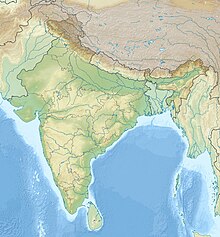| Third Gupta interregnum | ||||||||||
|---|---|---|---|---|---|---|---|---|---|---|
| Part of Wars of Gupta Empire | ||||||||||
| ||||||||||
| Belligerents | ||||||||||
| Skandagupta's Faction |
|
Ghatotkacha-gupta's Faction Prakashaditya's Faction | ||||||||
| Commanders and leaders | ||||||||||
| Skandagupta |
Ghatotkacha-gupta Prakashaditya | |||||||||
Historians suggest that the conflict arose from a dispute over succession following the death of Kumaragupta. The chronicle mentions that at least several usurpers were involved. These included Kumaragupta's brother Govindagupta, a nephew called Ghatotkachagupta, and one Prakashaditya; gold coins discovered in the course of excavation at Mandasor and elsewhere establish the existence of this latter one. Purugupta was also a pretender, who was Skandagupta's halfbrother. He might have been some of Skandagupta's usurpers.[1][2]
Skandagupta ascended the throne in the year 136 of the Gupta era (approximately 455–456 CE) after overcoming rivals. As mentioned in the Bhitari pillar inscription, he restored his family's declining fortunes during a time of crisis. The epitaph tells of how, before fighting his enemies, he had spent a night sleeping on the open ground. He then was able to conquer his enemies who had become very strong and prosperous. He then went to see his mother. She was very happy and thus wept tears of joy.[1][2]
25°34′00″N 83°17′20″E / 25.566654°N 83.288943°E
- ^ a b A Comprehensive History of India: pt. 1. A.D. 300-985. People's Publishing House. 1981. pp. 69–72.
- ^ a b Sinha, Bindeshwari Prasad (1974). Comprehensive History Of Bihar Vol.1; Pt.2. pp. 62–75.



